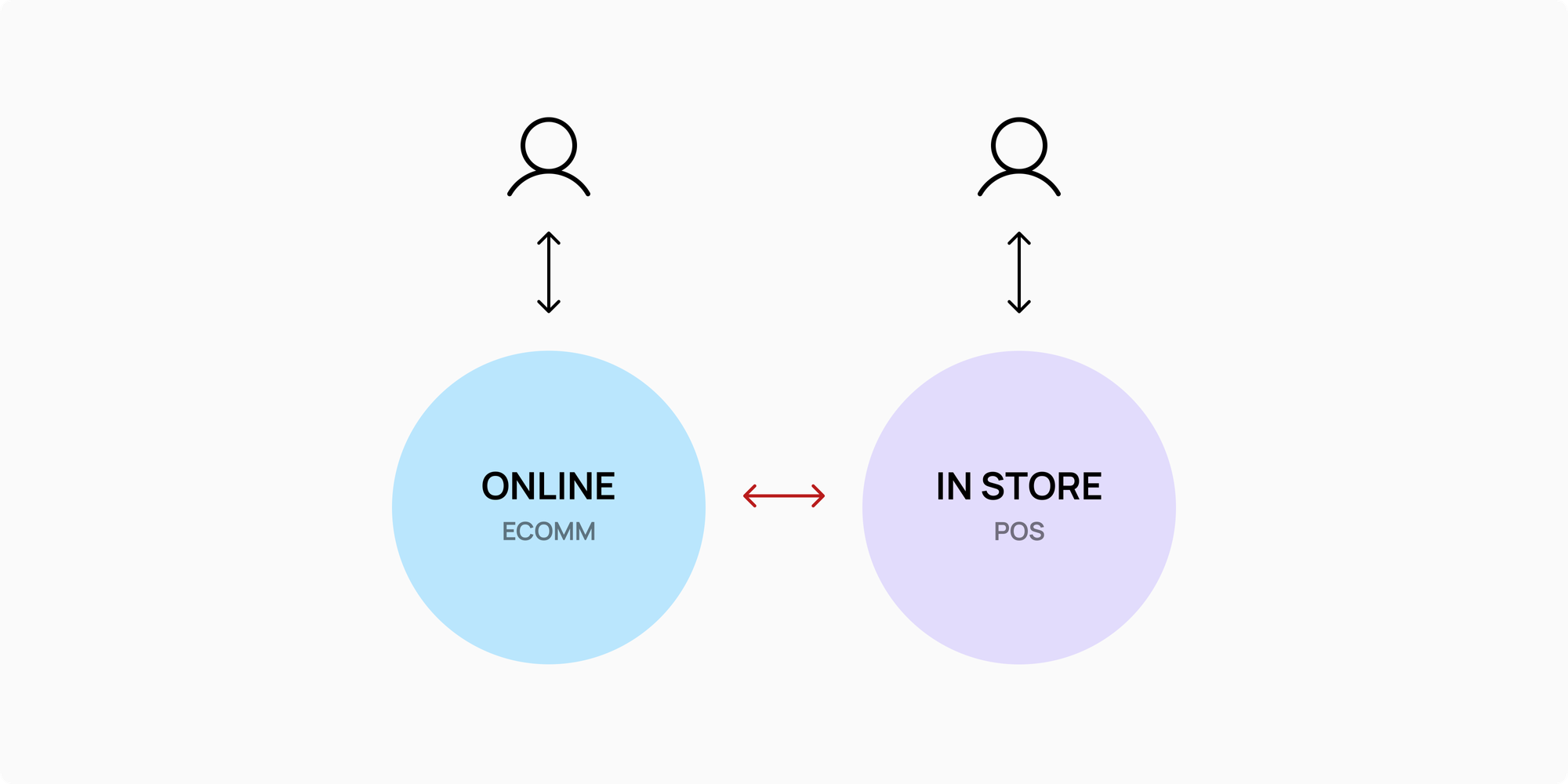Omnichannel commerce is a multifaceted approach to sales that provides seamless customer experiences across all channels. Whether the customer shops online or in a brick-and-mortar store, the goal is to create a consistent experience at every touchpoint.
The brand must always see only one customer in an omnichannel business, no matter the touchpoint used for shopping. Whether the customer buys online or in-store, they are always identified. The customer's profile, order history, wallet, coupons, gift cards, and addresses are always available and shared across all channels seamlessly.
The customer, instead, always sees one brand, regardless of the channel. No matter which merchants are involved in the different channels, you never have the perception that you are shopping from different companies. It is always the same brand that calls you by name and knows everything about your relationship with it.
Despite the concept of one customer, one brand having been around for more than fifteen years, the experience of an omnichannel retailer is still very rare. As a matter of fact, brands and retailers typically use different systems for online and in-store transactions. This leads to duplication of data, inconsistent customer journeys, and the need for reconciling sales across all channels.

Introducing unified commerce, which connects your back-end systems to your customer-facing channels with a single platform. This is the setup companies require to support omnichannel journeys and manage customers, products, and orders in a unified way. By breaking down internal channel silos and leveraging a common commerce platform, unified commerce goes beyond omnichannel. There is no need to integrate ecommerce, POS, OMS, and clienteling apps, as they are all provided by the same system.

That might sound a bit monolithic, and it is. As it turns out, a composable approach is great if different components handle different aspects of the business, but it isn't ideal if it's used to split up one domain into different parts. With one commerce backbone, brands can offer their customers the omnichannel experience they've been dreaming of for years, while dramatically reducing integration and reconciliation complexity.
However, building a single source of transactional truth is easier said than done. While ecommerce and retail share many similarities, both have very different needs. Online selling requires a great level of flexibility and strict performance SLAs. Instead, in-store sales might have lighter performance requirements, but must operate even without an internet connection, comply with stricter local regulations, and facilitate face-to-face interactions.
Unified commerce infrastructures must support all those requirements under one umbrella, which is not easy, but essential. The pandemic has taught us—the hard way—that store digitalization is no longer optional. Meanwhile, many digital companies are still licking their wounds after over betting on the end of physical experiences.
The physical store is being reinvented rather than replaced by online shopping. In a sense, the customer is both on the Internet and in person at the same time. Now is the time to rethink their entire shopping experience from scratch.